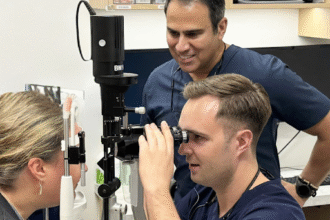Electrical problems in wrecked cars often hide beneath visible collision damage. A front-end impact crushes more than just sheet metal — it damages wiring harnesses, sensors, control modules, and connectors scattered throughout the affected area. These electrical issues don’t always show up immediately and can create frustrating intermittent problems that are expensive to diagnose and repair.
Understanding how to check electrical systems before purchasing helps anyone avoid vehicles with hidden electrical damage that will consume time and money. A vehicle with $3,000 in visible body damage might have another $2,000 in electrical repairs that auction photos never reveal.
Understanding Modern Vehicle Electrical Complexity
Today’s vehicles contain dozens of electronic control modules communicating through network systems. The engine control module manages fuel and ignition. The body control module operates lights and accessories. The airbag module monitors crash sensors. These modules and many others exchange data constantly.
Collision damage interrupts this communication in multiple ways. Crushed wiring harnesses create open circuits. Damaged connectors cause intermittent connections. Bent pins inside connectors prevent proper contact. Water intrusion corrodes circuits. Impact forces crack circuit boards inside modules.
Checking for Obvious Wiring Damage
Wiring harnesses run throughout vehicles, typically bundled and routed along frame rails, through fender wells, and across firewalls. Impact zones show the most obvious damage. Harnesses in crumpled areas get crushed, torn, or severed completely.
Looking at engine bay photos reveals harness condition in front impacts. Wires should appear intact with protective coverings undamaged. Exposed copper strands, torn insulation, or hanging wire ends indicate damage that needs repair.
Connector condition matters as much as wire integrity. Connectors should seat fully with locking tabs engaged. Damaged connectors show cracked housings, bent pins, or corrosion. Water entering damaged connectors causes green or white corrosion that increases electrical resistance and creates intermittent problems.
Grounding points provide return paths for electrical current. These ground connections bolt to body panels or frame rails. Impact damage bends mounting points, breaks ground straps, or loosens connections. Poor grounds cause multiple seemingly unrelated electrical problems because many circuits share common ground points.
Testing Battery and Charging Systems
Batteries survive most collisions physically intact, but might suffer hidden damage. Impact forces can crack internal plates or break connections. A damaged battery might start the vehicle but fail under electrical load.
Checking battery voltage with a multimeter provides basic information. A fully charged battery should read 12.6-12.8 volts with the engine off. Voltage under 12.4 suggests either a discharged or failing battery. Starting the engine should raise the voltage to 13.5-14.5 volts, confirming the alternator charges properly.
Load testing reveals battery capacity. Automotive parts stores typically offer free testing. A battery that shows good voltage but fails under load needs replacement before any other electrical diagnostics.
Alternator damage from impact shows in charging system failures. Front-end collisions sometimes damage alternator mounting or drive belt systems. Checking belt condition and alternator mounting security identifies these mechanical issues.
Scanning for Diagnostic Trouble Codes
Modern vehicles store diagnostic trouble codes when systems detect problems. Scanning these codes before purchase reveals what the vehicle’s computers have detected. A basic OBD-II scanner costs $20-50 and reads generic codes.
Code reading should happen with the battery properly connected and the ignition on. A front-end collision might generate codes for:
- Airbag system faults from damaged sensors or harnesses
- ABS system errors from wheel speed sensor damage
- Engine management codes from damaged intake air sensors
- Transmission codes from damaged wiring near the transmission
- Body control module codes from damaged lighting circuits
The number and types of codes indicate electrical damage extent. Three or four related codes might stem from one damaged harness. Twenty codes across multiple systems suggest widespread electrical problems that will be expensive to repair.
Some codes clear easily and don’t return — these represent one-time events. Others reset immediately after clearing, indicating active problems.
Checking Lighting and Accessory Functions
Testing basic systems reveals immediate electrical problems. Turn signals, headlights, brake lights, and hazard lights should all function. Non-working lights might be simple bulb failures or could indicate damaged circuits.
Power windows, locks, and mirrors test body control circuits. All four windows should operate smoothly. Door locks should engage and disengage from switches. Mirrors should adjust in all directions. Non-functioning accessories point toward damaged body control systems or severed harnesses.
Climate control systems include electrical and mechanical components. The blower motor should operate at all speeds. Temperature controls should adjust air temperature. Mode controls should direct air properly.
Radio and infotainment systems rely on multiple circuits. Audio should play, displays should illuminate, and controls should respond. A dead radio might indicate broader electrical problems beyond just entertainment systems.
Inspecting Airbag System Components
Airbag systems receive significant attention because deployment indicates severe impact. Deployed airbags obviously need replacement, but undeployed airbags after collision raise different questions.
Airbag warning lights on the dashboard indicate system faults. These lights should illuminate briefly when starting the engine, then extinguish. A steady airbag light means the system detected problems and disabled itself. This could be damaged sensors, severed wiring, or faulty control modules.
Crash sensors mount in front and rear bumper areas, door panels, and B-pillars. Impact damage near these locations often damages sensors. Even cosmetically minor bumper damage can destroy sensors located behind covers. These sensors cost $50-200 each, and vehicles often have 4-8 sensors throughout the structure.
The airbag control module typically mounts under the center console or near the transmission tunnel. Side impacts sometimes damage these modules. Water intrusion into the passenger compartment can also affect modules. Damaged modules require replacement at $200-600 plus programming.
Evaluating Sensor Damage
Modern vehicles use dozens of sensors for engine management, safety systems, and driver assistance features. Collision damage destroys sensors in impact zones. A front-end collision typically damages:
- Mass airflow sensor
- Ambient temperature sensor
- Front radar sensor (if equipped with adaptive cruise control)
- Forward collision warning cameras
- Front parking sensors
Each damaged sensor adds to repair costs. Mass airflow sensors cost $150-300. Radar sensors run $300-800. Camera systems cost $200-600. Parking sensors are $50-150 each.
Checking which sensors a vehicle has and where they mount reveals potential damage. Vehicles with advanced driver assistance systems face higher electrical repair costs because these systems use expensive sensors and cameras that collision damage destroys.
Water Intrusion Concerns
Water entering damaged areas causes ongoing electrical problems. Moisture corrodes connections, damages modules, and creates short circuits. Water damage isn’t always obvious immediately — corrosion develops over days or weeks after initial exposure.
Signs of water intrusion include:
- Moisture inside light housings
- Wet carpet in footwells
- Musty odors in the cabin
- Condensation inside instrument cluster
- Corrosion on visible connectors
Water-damaged vehicles need extensive electrical system inspection and often require replacing entire harnesses. The cost and complexity of water damage repairs make these vehicles poor candidates for repair in most cases.
Calculating Electrical Repair Costs
Electrical diagnostics at professional shops cost $100-150 per hour. Complex electrical problems require 3-8 hours of diagnosis before repairs even begin. Parts costs then add to diagnostic time. A vehicle needing $400 in parts and 6 hours of diagnosis and repair totals $1,000-1,300 in electrical work.
Multiple electrical issues compound costs quickly. A vehicle needing harness repair, sensor replacement, and module programming might face $2,000-4,000 in electrical repairs on top of body and mechanical work.
Making Informed Decisions
Electrical damage assessment before purchase prevents expensive surprises. A vehicle showing extensive electrical codes, non-functioning systems, or damage near critical wiring areas needs very conservative bidding or should be avoided entirely.
Anyone evaluating buy wrecked cars opportunities should test electrical systems as thoroughly as possible. Vehicles that start and show all systems functioning have a lower electrical risk. Those that won’t start, show warning lights, or have non-functioning accessories likely hide significant electrical damage.
Understanding electrical system evaluation helps identify which salvage cars represent reasonable projects and which hide complications that make repairs impractical. Electrical problems are among the most frustrating issues when repairing damaged cars because they’re often intermittent, difficult to diagnose, and expensive to fix properly.
When looking at accident cars for sale or totaled cars for sale at auction, thorough electrical testing separates vehicles with manageable repair needs from those with hidden electrical problems. Anyone considering damaged cars for sale should prioritize electrical system checks alongside visible body damage assessment. This comprehensive evaluation approach helps identify which vehicles among crashed cars listings will result in successful repairs versus expensive failures.

















